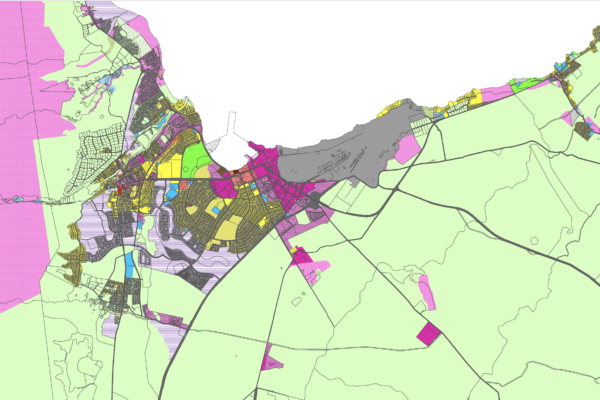Birth Of The Public Land Development Corporation – A travesty of the legislative process
Many have asked how come none of the regular environmental and public interest watch-dog groups sounded the alarm earlier? How did such a law get passed?
Among other things, Act 55 creates the Public Land Development Corporation (PLDC) and gives them the power to develop public lands with projects that are “exempt from all statutes, ordinances, charter provisions, and rules of any government agency…”. This could mean the construction of a hotel, a high rise condominium, a shopping center, housing developments or just about anything, that could be built on public lands and all would be “exempt from all statutes, ordinances, charter provisions, and rules of any government agency…”. There are many very bad elements to Act 55 and the powers granted to the PLDC but to me, the exemption power is the clearest example of why this new law should be repealed.
How did this happen. How did it slip through the checks and balances of our legislative process?
A better question is how did it sneak through the process because that is what happened. IMHO
A cursory look at the legislative history show clearly there were 4 hearings held on what started out as SB1555 and ended up as Act 55 and the creation of the PLDC. On the surface it looks like there were 4 opportunities for the public to testify and engage in the democratic process. On the surface that is…but the truth is below the surface and deserves a good look. It may even deserve some sunshine.
Let’s take a look at those 4 opportunities for public input.
1) SB1555 was introduced on January 26, 2011 and a public hearing in the Senate Water/Land/Housing Committee was held on 2/8/11 (public notice given on 2/2/11). At this time SB1555 among other things did not contain any provisions for exempting projects from “all statutes, ordinances, charter provisions, and rules of any government agency…” and it also provided for an 11 member Board of Directors and required neighbor island representation. Much of the language of SB1555 focused on the Ala Wai and Keehi Harbor issues. There was minimal public testimony. A SD1 version was approved by the committee containing only minor technical amendments.
2) On 3/01/11 the Senate Ways and Means Committee held a “public decision making” (public notice given on 2/25/11). While written “comments” may be offered, no public testimony is accepted at this meeting. A SD2 version was approved by the committee containing only minor technical amendments.
3) On 3/18/11 the House Water/Land/Ocean affairs Committee held a public hearing (public notice given on 3/15/11) and at the end of the hearing passed out SB1555HD1 that was dramatically different from the prior version. The House version now included exemptions from County permitting and zoning requirements. The House version also stripped out the requirement for Neighbor-Island representation. Other significant changes were also made to this version, dramatically changing it from the prior SB1555SD2.
IT IS IMPORTANT TO NOTE THAT UP UNTIL THE END OF THIS COMMITTEE HEARING AND THE ACTUAL PUBLISHING OF THE AMENDMENTS, THAT THE PUBLIC IS NOT AWARE OF THE NATURE OF THE CHANGES AND THE POTENTIAL IMPACT OF SB1555HD1
4) On 4/07/11 the House Finance Committee held a public hearing (PUBLIC NOTICE GIVEN LESS THAN 2 HOURS PRIOR TO THE HEARING – see actual hearing notice here http://www.capitol.hawaii.gov/session2011/hearingnotices/HEARO ING_FIN_04-07-11_1_.pdf ). At the end of this hearing the House Finance Committee passed out SB1555HD2 after making further changes.
The measure then went to Conference Committee where there is NO PUBLIC TESTIMONY ALLOWED and additional very significant changes were made.
Quick and dirty (very dirty) summary: THE PUBLIC HAD ONLY ONE OPPORTUNITY TO TESTIFY ON THE SUBSTANCE OF ACT 55 AS WE KNOW IT TODAY AND THAT WAS AT THE HOUSE FINANCE COMMITTEE WHICH PROVIDED LESS THAN 2 HOURS PUBLIC NOTICE. Unless you were in the building and checking your smart phone during the 2 hour period preceding this hearing…you had no way of knowing it was even on the agenda. The original version did not exempt any projects from zoning or permitting. This was first added in the House and then dramatically expanded in Conference Committee. There are many other changes that happened during this process and explains why many/most environmental watchdog groups did not engage this issue early.
Disgusting is too kind a word to use to describe the process used to give birth to Act 55 and the Public Land Development Corporation.
Please don’t take my word for it. It’s all here in the legislative history that is available at: http://www.capitol.hawaii.gov/Archives/measure_indiv_Archives.aspx?billtype=SB&billnumber=1555&year=2011
To be clear, I offer these comments purely from a personal and individual perspective and not in any official capacity whatsoever.
Hooser – Remarks On The Public Land Development Corporation
On Wednesday September 26 members of the public (including myself) gave the Kauai County Council a standing ovation for their unanimous passage of a Resolution supporting the repeal of Act 55 and an end to the Public Land Development Corporation (PLDC).
The Garden Island newspaper reported thoroughly on the event and quoted me:
“I believe this county, you folks and our community, should send the strongest possible message … that this is unacceptable,” said Hooser, adding that despite Abercrombie publicly saying he would veto any repeal by the Legislature, he believes otherwise. It would be very contentious, provocative and a big mistake from the governor to veto a repeal, given the clear community outrage and pressure to repeal Act 55, Hooser said.
While the above is essentially an accurate reflection of my remarks, it lacks the context in which those remarks were made. After offering my formal written testimony (see below), Councilmember Nadine Nakamura asked me to speculate on whether or not the Governor might actually veto a “repeal Bill” as he has in the past stated was his intention. I then stated that given the reality of what it would take to achieve the monumental task of convincing a majority of the House and Senate to reverse its prior position of approval, and given the reality of the enormous public sentiment that would be required to make this happen – that I could not imagine the Governor then vetoing the measure. It certainly was not my intent to imply that the Governor did not mean what he said, it is just that I cannot imagine him actually doing it.
My actual written testimony submitted is as follows:
September 26, 2012
RE: Resolution 2012 -52 – Testimony to the Kauai County Council supporting the repeal of Act 55 establishing the Public Land Development Corporation
Aloha Councilmembers,
My name is Gary Hooser and I am testifying today in support of the passage of Resolution 2012-52 and the complete repeal of Act 55 establishing the Public Land Development Corporation.
I presently am on leave from my job as the Director of the Office of Environmental Quality Control (OEQC) for the State of Hawaii. As the Director of that office, my primary responsibility is the administration of Chapter 343 HRS which establishes and defines environmental impact statement (EIS) requirements for the State of Hawaii. I am very familiar with the workings of Chapter 343 and as the Director have provided numerous consultations and workshops on the proper implementation of this important law.
To be clear, I am offering this testimony today on my own behalf and not in my official capacity as the Director of that office.
Though I have many concerns about Act 55, my focus today is primarily based on the broad-based exemptions the law grants yet to be determined development projects that could involve anything from a concession stand in a park to housing developments or even hotel and time-share developments constructed on public lands in the future.
According to Act 55 projects developed by the PLDC are “exempt from all statutes, ordinances, charter provisions, and rules of any government agency relating to special improvement district assessments or requirements; land use, zoning, and construction standards for subdivisions, development, and improvement of land; and the construction, improvement, and sale of homes thereon”
The legislative exemption of a broad class of development projects from established permitting requirements is a fundamentally flawed principle from a public policy perspective. The statutes, ordinances, charter provisions, and rules of government agencies are there in order to protect the public interest. Act 55 gets rid of all of these rules and basically says “trust me”.
All of the projects mentioned as examples of why we need Act 55 and the PLDC can be accomplished without these exemptions and without the elimination of the public protections now missing in Act 55.
These yet to be determined development projects that would occur on public land should absolutely be required to get the necessary permits and to undergo close scrutiny by the public and the public agencies responsible for fundamental health, safety and environmental protection of our community. If anything, the development of public lands should be held to an even higher standard, certainly those standards should not be lowered such as is allowed with Act 55.
Chapter 343 has been held up by advocates of Act 55 and the PLDC as evidence that environmental laws and protections will remain in place. I believe this is a mischaracterization of the power and protections afforded by Chapter 343.
Chapter 343 is primarily a disclosure document and is intended to thoroughly examine a proposed development project and disclose potential environmental and cultural impacts. However Chapter 343 has no teeth and no mechanism in which to require developments to include mitigation measures or design changes that would alleviate or eliminate the environmental impacts.
For example an Environmental Assessment or Impact Statement might point out the risk of excessive run-off that could result in the pollution of streams, near shore waters, reef habitats and related fishing populations. It is the permitting agency and those related “statutes, ordinances, charter provisions, and rules” that would require the developer to design and implement the project in a manner that would reduce or eliminate that negative impact. It would be the permitting agency that would then enforce the rules and requirements they placed on the developer. Without the support of State and County permitting agencies – Chapter 343 is but a paper tiger and offers few if any real environmental protections. The public can insist that an environmental review be conducted but there is no mechanism that would ensure actual environmental protections.
In conclusion – I strongly urge the Kauai County Council to support the full repeal of Act 55. If amendments are attempted at the legislature rather than a full repeal, my experience is that at the end of the day there would be only minor changes made, perhaps lots of language attempting to assure the public about the intent of the law but the fundamental flaws would remain in place. To be clear the intent of the law may indeed be to serve an important public purpose however the law itself as written, provides wide latitude for abuse and represents what I believe to be bad public policy with real potential for long term harm to both our natural environment and our community as a whole.
Respectfully,
Gary Hooser
5685 Ohelo Road
Kapaa Hawaii 96746



